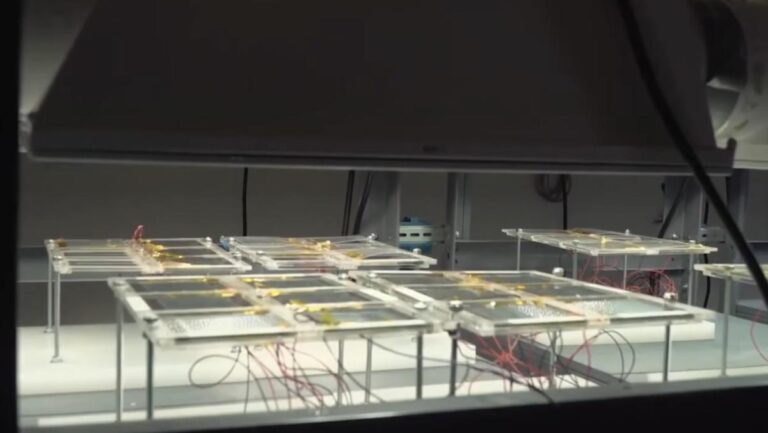Considering that adding more solar panels to the grid can both increase renewable energy potential and reduce electricity costs, it seems obvious that finding new places to integrate them would be a good idea.
As Altenergymag reports, NEXT Energy Technologies in Santa Barbara, California, has already made progress in transforming modern buildings into solar power generating structures using its NEXT OPV technology.
The company successfully delivered large-format glass wall panels with transparent organic photovoltaic (OPV) coatings to Gensler’s Los Angeles headquarters.
Andy Cohen, Co-Chairman of Gensler, told Altenergymag: “NEXT Energy Technologies’ transparent OPV is a game-changing innovation for architects that will transform the strategy for sustainable buildings in the near future and net-zero construction for decades to come by transforming a building’s glass façade into a clean, renewable energy source.”
So far, OPV panels typically only achieve about 11% efficiency in converting light to energy, compared to an average of 15 to 20% energy efficiency in most commercially available photovoltaic panels, as reported by MarketWatch.
Organic photovoltaic panels, however, have many advantages. These organic versions use carbon-based semiconductors that require much more abundant materials than those typically used in solar panels, and they are much less toxic. They can also capture light in the invisible infrared and ultraviolet spectrum while allowing visible light to pass through.
Watch Now: These Futuristic Gas Stations Could Completely Change the Lives of Electric Vehicle Owners
Gensler’s delivery included 27-by-35-inch “Lite” panels, which are currently in pilot testing as they work toward the full-scale goal of 60-by-120-inch versions. The OPV coating is a neutral gray and has achieved an efficiency of 3.5 percent, while its less transparent spandrel glass versions offer up to 12 percent.
NEXT Energy claims that buildings using its OPV-coated glass could manage up to 25% of a commercial building’s energy load while blending seamlessly into the design and without blocking views, as detailed in the Altenergymag report.
Researchers have worked with OPVs in a variety of applications, even developing flexible, waterproof versions that could be used on clothing. Others have explored new organic materials, which could increase the transparency potential of window-based solar power generation, according to Phys.org.
In Germany, HeliaTek is working on its own organic solar films, which are “ultra-light, flexible, ultra-thin and truly eco-friendly.” These films can be installed on building facades and other exterior surfaces where traditional photovoltaic panels would not work.
The folks at NEXT Energy are looking to the future with their company. Their technology is designed to last 30 years or more, can increase points toward LEED certification, and can reward residents with lower carbon pollution and a more sustainable living environment.
Homeowners can also make energy-efficient improvements to their own homes. Adding rooftop solar panels, geothermal heat pumps and other green technologies can help, with rebates available from the government through the Inflation Reduction Act tax incentives.
Join our free newsletter for weekly updates on the coolest innovations improve our lives And Save our planet.


